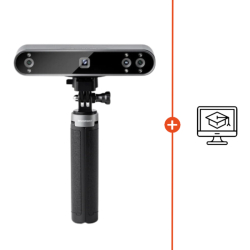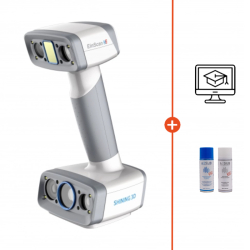- 👨🔧 Premium After-sale service
- 🚚 Free delivery from €39.90
- 📦 Return under 14 days
- ✉️ Customer service
filament PP (Polypropylene)
Active filters
filament PP (Polypropylene)
The filament PP (Polypropylene) is a high consumption thermoplastic polymer, characterised by its high inertia to chemical aggression, its high resistance to impact and, finally, its use at temperatures in excess of 100 degrees. It has exceptional fatigue resistance, high strength and a low coefficient of friction. This semi-flexible 3D printing material is frequently used for applications in packaging, tooling or chemical environments more generally. Translucent and watertight, it offers an effective solution for functional prototyping of bottles and containers. Even when finely constructed, it is highly resistant to impact and tearing. Flexible but rigid, it differs from other flexible materials (TPU and others) in its tendency to bend rather than flex. The interlayer bonding of this 3D polypropylene filament is exceptional and its isotropy is quite unique in the world of FDM.
The behaviour of PP in 3D printing varies greatly depending on the 3D model. Although it is better suited to applications using thin walls, it will lose a great deal of its flexibility if your models are solid. Not very demanding in terms of extrusion temperature, the challenge for this spool of 3D filament will be plate adhesion. Nothing sticks better to PP than PP, so it's important to provide a suitable adhesion solution: adhesion sheet Ultimaker, glue Magigoo PP, Smartstick PP. Sensitive to warping, it is recommended that you limit the thickness and density of your prints for good results with this filament.
The performance of PP is limited by its flexibility. For applications requiring chemical resistance and greater rigidity and hardness, discover the fibreglass-filled version PP GF30 from BASF for example.
How do I choose my polypropylene filament?
Choosing your spool of PP is fairly straightforward. The grades on offer can be differentiated according to their extrusion temperature; a quality material will generally have a tendency to crystallise slowly to limit tensions and improve bonding. PP fromUltimaker or BASF is a very good choice.
Polypropylene - flexible or rigid filament?
The PP filament is considered to be a semi-rigid material in the sense that it is both rigid and pliable. The flexible side comes from its high level of elasticity, which produces the resistance to deformation of a flexible material. It does, however, offer greater hardness and therefore a different perceived rigidity. The best image to illustrate PP is the behaviour of water bottle plastics. The PP composite version will greatly increase this rigidity and hardness, but will reduce elasticity.

































